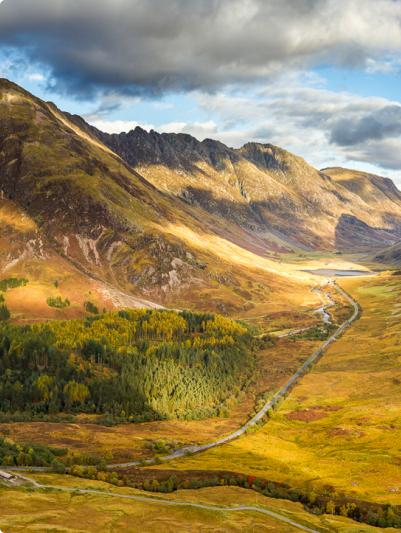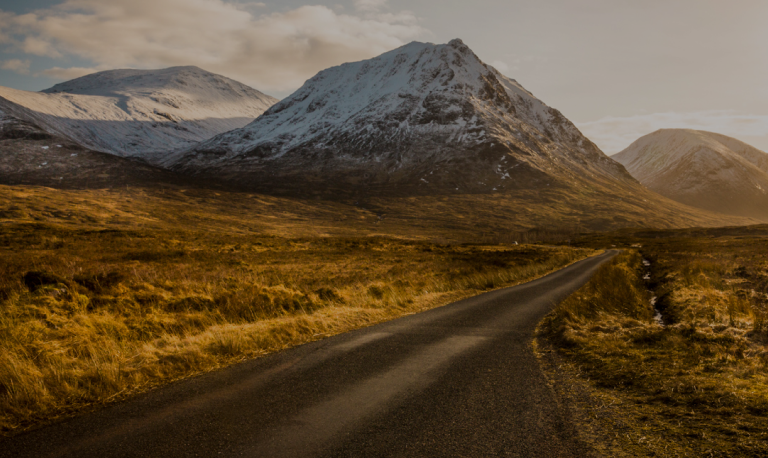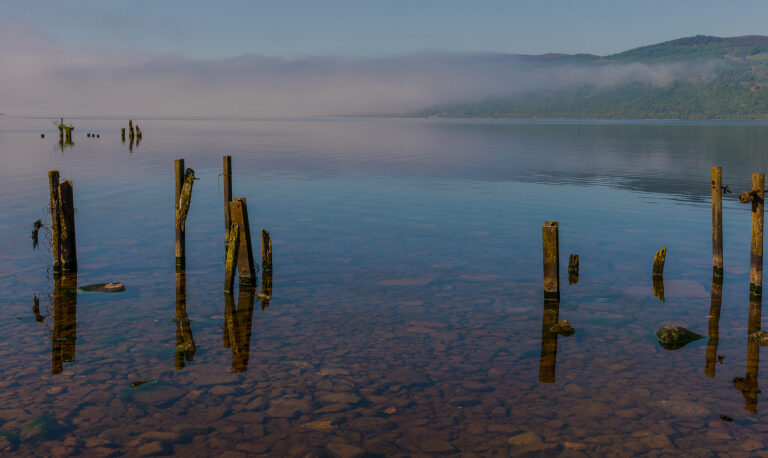Discover John Muir’s Secrets for a Happy Life
“The mountains are calling and I must go.”
Whether or not you’ve heard of John Muir, you will have likely heard this famous quote of his, taken from a letter to his sister describing his yearning to return to nature. There is, of course, much more to John Muir than his quotes.
Known in the United States as the ‘Father of National Parks’ and in the United Kingdom as the eponymous figure behind the John Muir Trust, a British conservation charity dedicated to protecting and enhancing our wild places, John Muir was also writer, author, philosopher, conservationist and pioneer.
But who exactly was John Muir? And what does he have to do with the John Muir Way?
Childhood in Scotland
Born in Dunbar on the east coast of Scotland in 1838, the connection Muir had to his Scottish birthplace and childhood remained strong throughout his life. Through outdoor adventures and long walks with his grandfather, Muir became fascinated by the natural beauty and wilderness surrounding him.
“When I was a child in Scotland, I was fond of everything that was wild, and all my life I’ve been growing fonder and fonder of wild places and wild creatures. Fortunately, around my native town of Dunbar, by the stormy North Sea, there was no lack of wildness.” – The Story of My Boyhood and Youth by John Muir
At the young age of 11, Muir and his family emigrated to Wisconsin in the United States, where they tended to a farm. Despite spending his adult life in the United States, Muir never lost his thick Scottish accent!
View this post on Instagram
The Father of National Parks
After an education at the University of Wisconsin, Muir worked in Indianapolis for a time before departing on what was to be the first of many trips into the wilderness. Following an accident at his work in which he was almost blinded, Muir is said to have been re-invigorated in his quest to learn more about nature and all of its wonders. He embarked on a 1,000 mile walk to the Gulf of Mexico, determined to take the wildest path he could find, enjoying the solitude that he found in nature.
In 1868, Muir visited the Yosemite Valley for the first time – walking there from San Francisco. He was overcome by the natural beauty and wonder of the area, describing the landscape as “the most beautiful I have ever beheld“. From this point on Muir was enamoured with the area and spent much time studying the natural landscape of the Yosemite Valley and surrounding area.
During his time living and studying in Yosemite, Muir attracted attention from other visitors to the area, and many people went out of their way to meet with Muir due to his growing reputation as a fountain of knowledge regarding Yosemite.
View this post on Instagram
Friendship with Theodore Roosevelt
Muir’s accomplishments are innumerable, however, it was one extraordinary encounter with President Theodore Roosevelt that led to his greatest one.
In 1903, Roosevelt visited Muir in Yosemite for a three day trip and the two men bonded quickly over the magnificent natural landscape surrounding them. It was on this trip that Muir convinced the President to designate wild areas of America as National Parks, thus creating the American National Park System.
Whilst it took some time for this plan to come to fruition, it was this achievement that earned John Muir the title of ‘The Father of National Parks’.
“Ordinarily, the man who loves the woods and mountains, the trees, the flowers, and the wild things, has in him some indefinable quality of charm, which appeals even to those sons of civilization who care for little outside of paved streets and brick walls. John Muir was a fine illustration of this rule.” – Theodore Roosevelt
Another of Muir’s many achievements was the founding of the Sierra Club in order to “do something for wildness and make the mountains glad“. Still active today, the club works tirelessly to continue Muir’s legacy and promote the protection of the wild places of the United States.
In a similar vein, the John Muir Trust works across the pond to protect and enhance wild places in the United Kingdom. Absolute Escapes is a proud corporate member of the John Muir Trust, and our team recently spent a day at Glenlude, one of the Trust’s properties, giving back to nature and learning more about the important work that the Trust does.
View this post on Instagram
The John Muir Way
Launched in 2014 (the 100th anniversary of his death), the John Muir Way connects Helensburgh on the west coast of Scotland – close to where John Muir and his family set sail to America – with Muir’s birthplace of Dunbar on the east coast. The trail is designed to encourage people to engage with Muir’s philosophies and to take a walk on the wild side.
Along with the Southern Upland Way, Hadrian’s Wall Path, and the Coast to Coast, the John Muir Way is one of only four walks in the UK that stretches from coast-to-coast, and is the only one of these walks to cross through a capital city – Edinburgh.
Unlike many other long-distance walking routes, the John Muir Way can also be tackled on bike or on horseback. Excellent way-marking and easy terrain make this a great walk for first time long-distance walkers who are looking to explore nature but also not stray too far from civilisation and sightseeing opportunities. The 134 miles of the route offer a huge range of scenery and historic sites.
View this post on Instagram
Why walk the John Muir Way?
From Helensburgh, a small town on the banks of the River Clyde, you’ll need to walk the trail for just over a mile before reaching The Hill House. Designed by Scots architect Charles Rennie MacIntosh, the house is a fantastic example of the work of one of Scotland’s most influential creative figures and one of the early pioneers of the Art Deco style. The Hill House was designed in 1902 for Scots businessman Walter Blackie who sought a family home outside of the increasingly industrialised nearby city of Glasgow.
Leaving the west coast behind, the trail enters Loch Lomond & The Trossachs National Park where you will be greeted by a spectacular view of Loch Lomond, where you’ll spend your second night on the trail. Britain’s largest loch by surface area – Loch Lomond is perhaps best known from the song ‘The Bonnie Banks o’ Loch Lomond’, without which, no Scottish playlist is complete!
The trail then winds through Balloch Castle Country Park. The castle is now derelict, however, the remains provide the imagination with plenty of inspiration to picture the grandeur that it once had.
View this post on Instagram
Beyond Loch Lomond, the route ambles through the countryside before joining the Forth & Clyde Canal. Connecting the Firth of Clyde to the west and Firth of Forth to the east, the canal is paramount in allowing seagoing vessels to pass through the Lowlands of Scotland.
Just a short detour from the trail you will find The Antonine Wall, the first of three UNESCO World Heritage Sites that can be visited on the John Muir Way. The Northernmost frontier of the Roman Empire, the wall served as protection from the Caledonians in the north. The way and wall intersect a few times more on the walk, so you’ll have plenty of opportunities to explore what remains of this once great border.
From an ancient Roman wall to a marvel of modern engineering, the John Muir Way brings you to The Falkirk Wheel. This impressive structure is the only rotating boat lift in the world, connecting the Forth & Clyde Canal with the Union Canal. The Wheel raises boats 24 metres to allow them to continue their passage along the canalways. Historically the two canals had been connected by a series of manually operated locks, known as a lock flight. Have a break in the coffee shop as you watch this incredible piece of machinery in action.
Shortly after the charming town of Linlithgow, the trail skirts by 15th-century fortress Blackness Castle. Known as ‘the ship that never sailed’ due to its shiplike structure, Blackness was used as a prison and garrison from the 15th century onwards. These days it leads a much gentler life in the care of Historic Environment Scotland, and was used as a filming location for the incredibly popular Outlander TV series.
View this post on Instagram
The trail continues to three magnificent bridges spanning across the Firth of Forth – the brand new Queensferry Crossing, the 20th century Forth Road Bridge, and the 19th century Forth Bridge. The latter, with its iconic brick-red paintwork and diamond-shaped cantilevers, makes the second UNESCO World Heritage Site on the John Muir Way.
The John Muir Way makes its way into Edinburgh, Scotland’s magnificent capital city, the final UNESCO World Heritage Site on the trail, and the home of Absolute Escapes! Edinburgh blends old and new, historic and modern, and is loved by visitors and locals alike. Whether you stroll around the city after your day’s walk or spend a few extra days exploring, Edinburgh is bound to capture your heart.
Waving Edinburgh goodbye, it’ll be time to make your way back to the coast as you head east towards the end of the John Muir Way. Before you reach this, there’s another treat in store for you, as you traverse along the beautiful coastline of East Lothian, home to fascinating wildlife including a huge variety of seabirds and grey seal.
Take the opportunity to visit the Scottish Seabird Centre in the picturesque seaside town of North Berwick, where you can learn more about the seabirds in the area at the excellent visitor centre, or take a boat trip to the Bass Rock – home to one of the largest colonies of gannets in the world.
View this post on Instagram
The final leg of the John Muir Way meanders through the very countryside where John Muir grew up in and developed his love for the outdoors, before arriving at Dunbar, where John Muir’s life began and where your walk will sadly come to an end. Before departing, visit John Muir’s birthplace – now a museum which chronicles his life from a young boy in Scotland to famed writer and legendary figure.
“In every walk with nature one receives far more than he seeks.” – Steep Trails by John Muir
The John Muir Way provides something for everyone: a beautiful national park, historic cities, quaint villages, wonderful wildlife, and no less than three UNESCO World Heritage Sites! Discover John Muir’s secret to a happy life: escape into the wild.
Pippa Robson
P.S. Absolute Escapes offer award-winning self-guided walking holidays on the John Muir Way, and on many of the best long-distance routes in the UK and Ireland. Our packages include accommodation, daily baggage transfers, guidebook/map, and a full information pack. Please do not hesitate to send us an enquiry if we can help you plan an unforgettable walking holiday.


